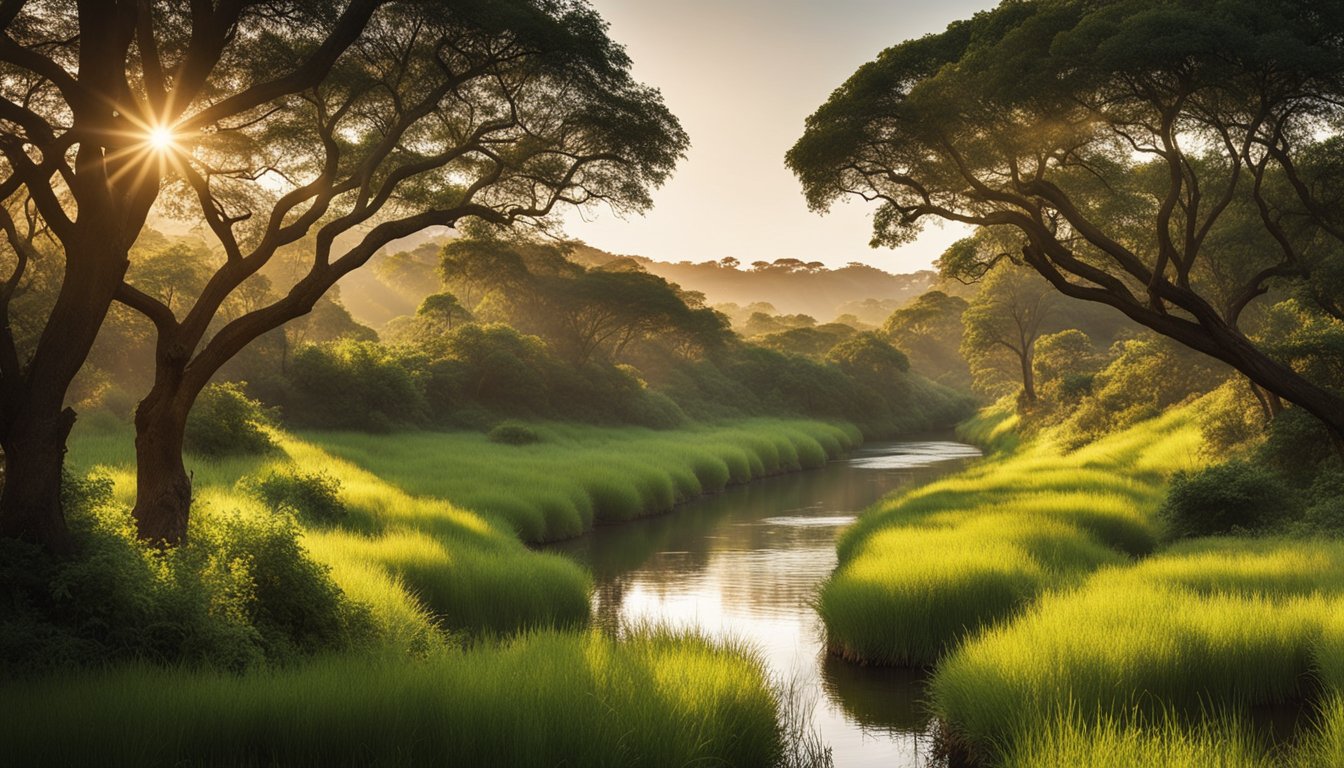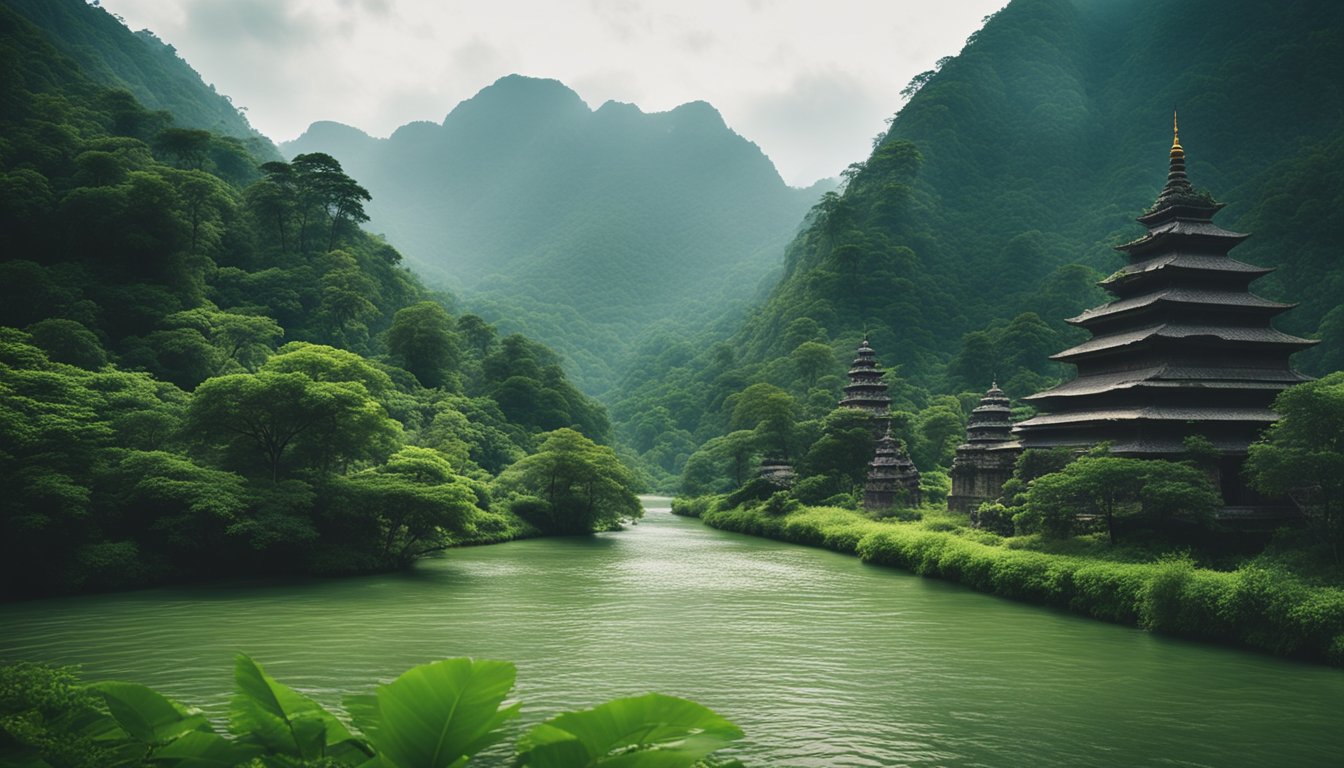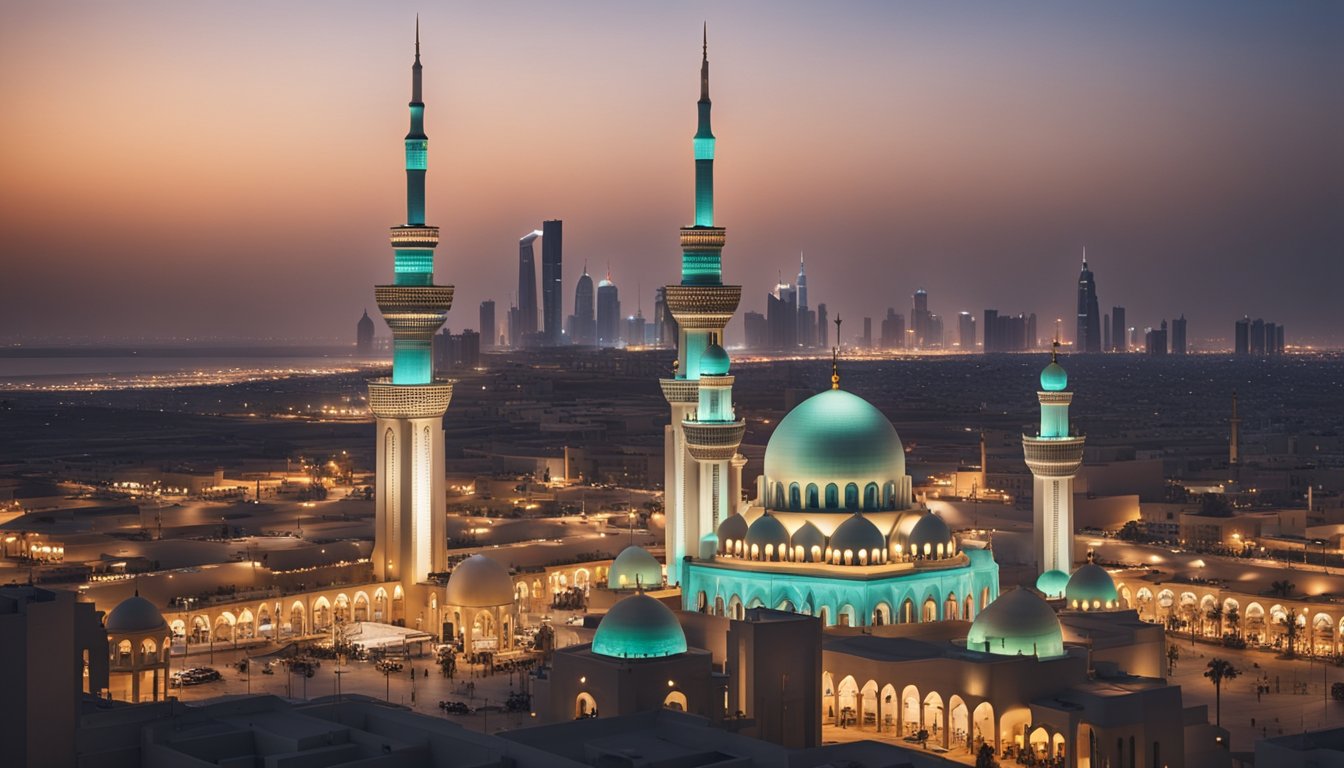Nestled in the southern reaches of Africa, Eswatini, formerly known as Swaziland, is a small landlocked kingdom renowned for its rich biodiversity and pristine nature reserves. Despite its diminutive size, it offers a diverse range of landscapes, from the lush peaks of the Lebombo Mountains to the vast savannas teeming with wildlife. As one of the last remaining monarchies in Africa, Eswatini boasts a cultural heritage as vibrant as its natural beauty, making it a compelling destination for travelers seeking an intimate encounter with Africa’s undisturbed wilderness.

Eswatini’s nature reserves are some of the best conserved on the continent, providing sanctuary to a variety of species, including the sought-after Big Five. These reserves, such as Mlilwane Wildlife Sanctuary and Hlane Royal National Park, are critical havens for conservation efforts and offer visitors the chance to engage in a multitude of activities such as game drives, guided walks, and cultural tours. The commitment to environmental preservation is palpable here, where human development is carefully balanced with the need to maintain the integrity of these precious ecosystems.
For those yearning to explore the enchanting landscapes of Southern Africa, Eswatini is a destination that should not be overlooked. Its strategic location, bordered by South Africa and Mozambique, provides ample opportunity for cross-border excursions, making it an ideal addition to any Southern African adventure. With its accessible parks, rich cultural traditions, and commitment to conservation, Eswatini serves as a microcosm of the continent’s extraordinary wildlife and natural splendors.
Navigating the Landscapes

In Swaziland, the seamless blend of majestic terrains and diverse ecosystems calls for exploration. The wealth of natural landmarks, coupled with cultural treasures, offers a journey through the raw beauty of this African kingdom.
Majestic Mountains and Valleys
Swaziland’s mountainous regions, such as the highlands of Malolotja Nature Reserve, present breathtaking views. Here, the Drakensberg mountains carve through the land, offering challenging terrain for those seeking the thrill of a hike. The valleys cradle a medley of flora, inviting travelers to traverse the verdant landscapes on foot or by mountain bike.
Rivers, Waterfalls, and Dams
The kingdom’s water bodies, including tranquil rivers and dramatic waterfalls, are central to its allure. Malolotja boasts the highest falls in Eswatini, providing not only a stunning visual but also a habitat for species like hippos and crocodiles. Dams across the region serve as serene spots for picnics and bird-watching.
Flora and Fauna Diversity
The Mlilwane Wildlife Sanctuary and other reserves protect an array of wildlife. Visitors might encounter antelopes, zebras, and a multitude of bird species. The sanctuaries’ ecosystems range from grasslands to dense forests, each housing a unique composition of fauna and hosting a vivid array of plant life.
Conservation Efforts and Projects
Dedicated conservation areas aim to preserve Swaziland’s natural heritage. Projects focus on ecological restoration and the protection of endangered species. Participation in conservation activities offers a hands-on experience in understanding and safeguarding local biodiversity.
Cultural Hotspots and Historical Sites
The nation’s rich history is palpable at sites like the Mantenga Cultural Village and Lobamba, the seat of the monarchy. Visitors can partake in cultural events such as the Umhlanga, or Reed Dance, and observe traditions that have been kept alive since the reign of King Sobhuza II.
Adventurous Trails and Activities
Swaziland’s landscapes are interwoven with trails ideal for hiking or mountain biking. Adventure-seekers might also enjoy a game drive, horseback riding, or joining guided tours to learn about the local wildlife and terrain.
Local Accommodations and Amenities
Eswatini caters to a range of visitors with diverse options for stay. One can choose from luxury lodges to traditional rondavels or campsites, each offering a unique perspective of the kingdom’s splendor. Amenities such as local cuisine and crafts enhance the travel experience, providing comfort and culture.
Wildlife Encounters

Swaziland’s nature reserves offer a diverse range of wildlife encounters, facilitating intimate interactions with Africa’s majestic fauna within untouched wilderness settings.
Mlilwane, an Eden of Biodiversity
At Mlilwane Wildlife Sanctuary, visitors are embraced by an Eden of biodiversity. This sanctuary is home to an array of fauna including zebras, nyala antelopes, and hippos. Often explored on foot or horseback, Mlilwane allows for an immersive experience in the wilderness surrounded by the dramatic backdrop of Sibebe Rock.
Mkhaya Game Reserve’s Unique Inhabitants
Mkhaya Game Reserve is renowned for its efforts in conservation, particularly the protection of rhinos and elephants. Safaris here are exclusive and offer the chance to see not only these iconic mammals but also a variety of antelopes thriving in their natural habitat.
Exploring Hlane Royal National Park
Hlane Royal National Park, the largest in Swaziland, is a stronghold for lions and elephants, hosting an important population within its boundaries. The sense of wilderness is palpable, and visitors can pursue the illustrious Big 5 on guided game drives.
Birdwatching at Phophonyane
Phophonyane Falls Nature Reserve is a paradise for birdwatchers, featuring an impressive roster of avian life. Notable species include the elegant blue crane and the elusive narina trogon. The falls and lush surroundings provide a serene environment to observe these birds in flight.
Mbuluzi Game Reserve’s Thriving Wildlife
Nestled next to the Limpopo basin, Mbuluzi Game Reserve is known for sightings of giraffes, zebras, and impalas among others. The reserve’s network of trails invite guests to explore the thriving wildlife at their own pace.
| Animal Species | Best Spots to Observe |
|---|---|
| Giraffe | Open plains |
| Zebra | Waterholes |
| Impala | Acacia thickets |
Seeking the Elusive in Shewula Mountain Camp
For those drawn to remote locations, Shewula Mountain Camp offers the thrill of pursuing elusive wildlife such as leopards, hyenas, and buffalos. The community-run camp integrates conservation with local heritage, providing a unique window into Swaziland’s diverse ecosystem.
Outdoor Adventures and Safaris

Swaziland, now officially known as Eswatini, offers a variety of outdoor activities and safari experiences that cater to both adventure enthusiasts and those seeking a deeper connection with nature.
Guided Safari Tours
Guided safari tours in Eswatini provide an intimate view of the country’s diverse wildlife. Visitors flock to the Ezulwini Valley and Manzini region to embark on game drives in open vehicles, where sightings of zebras and other majestic animals are common. The expert guides enhance the experience, sharing their knowledge of the wilderness and the behaviors of local fauna.
- 4×4 Game Drives: Engage in a thrilling adventure through rugged terrains with guided 4×4 game drives.
- Night Safaris: Explore the nocturnal side of the wildlife reserves, observing creatures seldom seen during the day.
Thrilling Hikes and Mountain Biking
The mountainous regions of Eswatini provide superb trails for hiking and mountain biking enthusiasts. Trails vary from leisurely walks to challenging terrain that attracts seasoned hikers.
- Hiking Trails:
- Mlawula Nature Reserve: Offers trails that lead to beautiful vistas and waterfalls.
- Mantenga Nature Reserve: Features a variety of trails suitable for different skill levels.
Mountain Biking:
- Ezulwini Valley: Known for its challenging and scenic mountain bike trails.
- Equipment Rental: Bikes can be rented from local shops, offering an accessible adventure for visitors.
Water Activities and Exploration
Eswatini’s rivers and water bodies are teeming with life, offering unique water-based activities.
- Boating and Fishing: Enjoy peaceful afternoons on the water or exciting fishing adventures.
- Wildlife Spotting: Hippos and crocodiles are often seen along riverbanks.
Popular Destinations:
- Hlane Royal National Park: Home to large water bodies and dramatic waterfalls.
- Mbuluzi Game Reserve: Offers guided canoe trips down serene rivers.
Cultural Experiences and Festivals
The cultural heritage of Eswatini is rich and can be experienced through various festivals and village visits.
- Mantenga Cultural Village: A living museum where visitors can learn about traditional Eswatini life.
- Reed Dance (Umhlanga): An annual ceremony where the kingdom celebrates its customs and the monarchy.
Cultural Insights:
- Traditional Dancing: Witness vibrant traditional dancing, a hallmark of Eswatini’s cultural festivals.
- Craft Markets: Explore local markets where artisans sell traditional Swazi crafts.
Book Your Adventure: For more details and to book safaris or cultural tours, contact local tour operators who offer a range of packages tailored to different interests and budgets.
Planning Your Visit

Planning a visit to Swaziland’s nature reserves requires consideration of the best travel times, transportation, accommodation, and the crafting of a detailed itinerary. Keep in mind the cultural richness and the diverse ecosystems as you prepare for your journey.
Best Time to Travel
Swaziland (Eswatini), nestled in Southern Africa and bordered by South Africa and Mozambique, experiences a temperate climate, making it a year-round destination. However, the best time to travel for wildlife viewing is during the dry season, from May to September when animals congregate around water sources. For bird watching and lush scenery, the wet season, which runs from October to April, is ideal.
Getting Around Swaziland
Transportation within Swaziland can be a seamless experience with a rental car, as this offers the most flexibility to explore the reserves, like Malolotja and Mlilwane, at your own pace. Public transportation is available but may limit access to remote areas. Key cities like Mbabane and Manzini serve as hubs for getting around, with well-maintained roads leading to popular destinations like the Ezulwini Valley and Lobamba.
Accommodations and Stay
Swaziland offers a variety of accommodation options, ranging from luxury lodges and hotels to budget-friendly rondavels and campsites. Staying within a reserve offers a direct connection to nature and often includes activities and guided tours. Consider the Mantenga Cultural Village for a cultural experience or lodges in mountainous regions for breathtaking views.
- Luxury Lodges: Available in main reserves; include amenities and guided safaris.
- Hotels: Located in urban centers such as Mbabane; offer comfort and convenience.
- Rondavels/Campsites: Offer a closer-to-nature experience; typically more affordable.
Creating Your Itinerary
Crafting an itinerary should balance famous attractions with hidden gems. Dedicate days to safari tours in conservation areas like Hlane Royal National Park, where encounters with the African Big Five are possible. Include cultural experiences such as the Mantenga Cultural Village and reserve at least one day for leisure in Malolotja Nature Reserve for hiking and enjoying the mountains.
- Day 1-2: Safari in Kruger-bordering reserves.
- Day 3: Cultural experiences in Lobamba and Mantenga.
- Day 4: Hiking in Malolotja reserve; admire mountain vistas.
- Day 5: Relax in Ezulwini Valley; explore local crafts and customs.
Travel Tips and Safety
When traveling through Swaziland, it’s important to be aware of local customs and safety guidelines. Always respect the conservation efforts and follow guidelines in reserves. Avoid remote areas at night and keep valuables secure. Health precautions such as vaccinations might be recommended. Confirm visa requirements if arriving from outside of Southern Africa.
- Conservation: Respect wildlife and follow park rules.
- Health: Check recommended vaccinations and health advisories.
- Security: Stay vigilant, especially in isolated areas.
- Remember, international travelers should check entry requirements, as these may vary depending on the country of origin.



